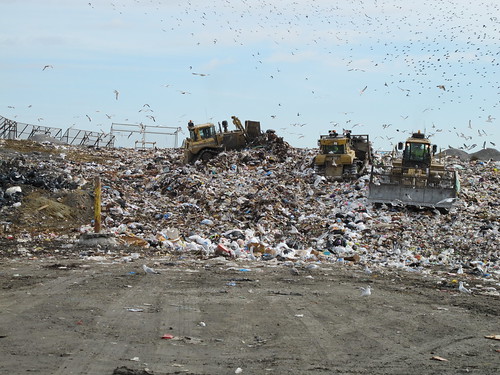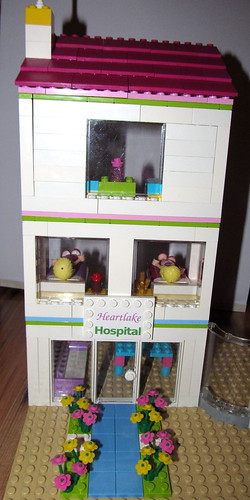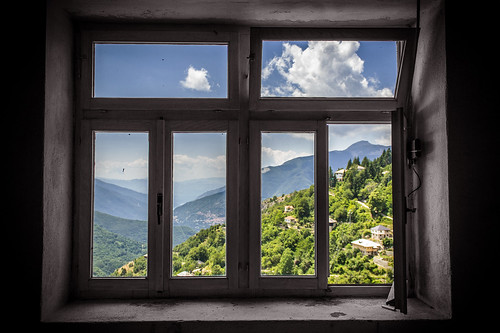Architectural Sustainability defined
 |
| Earth Day Image courtesy of AlicePopkorn via Flickr |
I can remember the first time I heard the term "sustainability" in relation to architecture in college over 20 years ago (yikes!).
Big-word-vague-definition, used by people who were talking about stuff that didn't really interest me. It was many years before I started paying attention.
Here's a nice definition of sustainability as it relates to building:
"Sustainable development is development that meets the needs of the present without compromising the ability of future generations to meet their own needs.”
Sounds good (if still vague).
Basically, living sustainably is living in such a way that our kids and grandkids can also live the same way! Let's change our approach to
- what we do with garbage (so our kids don't live in landfill subdivisions)
- how we consume nonrenewable resources (so our kids don't run out of oil, granite, old growth trees & lots of other stuff)

Old Dominion Landfill, Henrico, Virginia
courtesy of bsabarnowl via Flickr- how we look at human encroachment on wildlife habitats, instead of being annoyed when deer eat our landscaping (so that our kids aren't faced with a world that lacks biodiversity)
Worth caring about. :)
Summer Session Format
 |
| You might be inclined to build a architectural model to measure daylight! Image courtesy of seelensturm via Flickr |
Starting next week, every other week will be a lecture with homework. Please be sure to see the Homework page for some guidance on the variety of ways to approach it.
I'll use the in-between weeks to address more of the questions that were posed back in March by you folks. If you have new questions, feel free to post them in comments here or on the google+ community.
If you are new to the zessn schoolhouse, please join our google+ community to submit your own homework and see/discuss others' homework submissions and architectural thoughts.
Some of the Topics we'll explore this summer include:
- daylight
- scale
- LEED
- resources
- waste
- why sustainable design is the best thing that's happened to buildings in 100 years
Homework #013a
 |
| a gorgeous view in Galicnik, Macedonia Image courtesy of MLazarevski via Flickr |
Five questions to think about this week:
- How much time do you spend indoors every day? The American average is 90%.
- When you are indoors at home, at work, at school, can you see outside?
- When you sit in your typical/favorite spot... what can you see? A square of sky, a bird bath, landscaping, a chain-link fence, power lines, nothing in particular? Can you tell what time of day or what season of the year it is? Are you more concerned about who can see IN (privacy)?
- Is it important to see/hear the outdoors and/or nature when you're inside? Consider: "All other things being equal, patients with bedside windows looking out on leafy trees healed, on average, a day faster, needed significantly less pain medication and had fewer postsurgical complications than patients who instead saw a brick wall."
- In what ways do you think people who spend 90% (21.5 hours/day) of their time indoors have a life that is better or worse than those who spend at least 1/2 of their time outdoors? Is their philosophy/religion affected? Their physical and mental health? Their social development?
Finally, Feng Shui
 |
| Chinagarten Zürich Image courtesy of themonnie via Flickr |
It is a very complex and mysterious spiritual discipline that I will NOT attempt to be simplistic about, but I do hope to bring some of its concepts and descriptive language into many of the sustainability discussions. The main reason for this is that architects have not come up with a language yet for things that Feng Shui experts have been orchestrating and debating for millennia.
There is also Vaastu, Feng Shui's less-known Indian cousin with a flavour all its own.
Homework #013b
 |
| "On the way to Arosa II" Image courtesy of Tambako the Jaguar via Flickr |
Please familiarize yourself with three basic concepts below:
Cheers!
ally
No comments:
Post a Comment